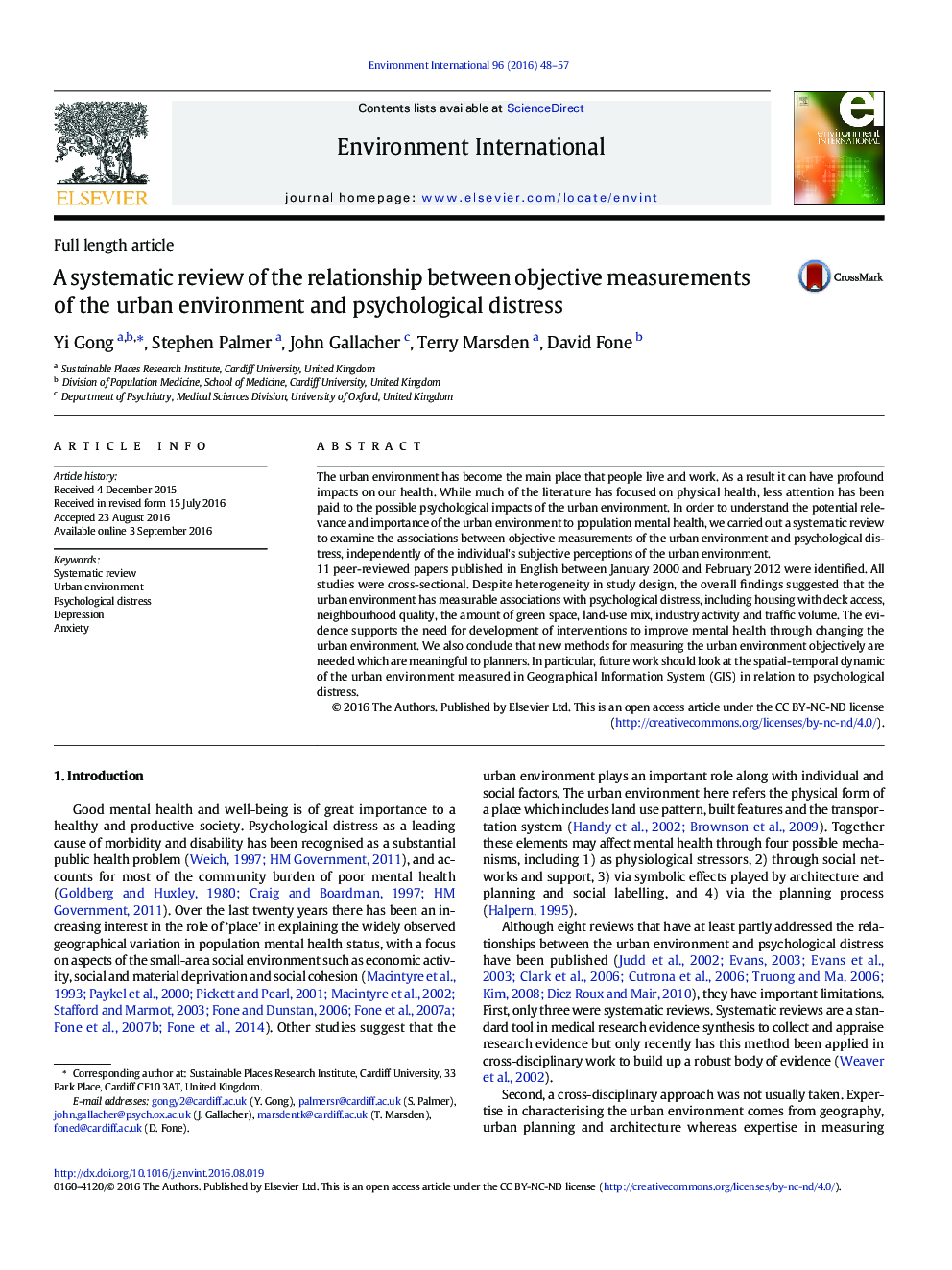| Article ID | Journal | Published Year | Pages | File Type |
|---|---|---|---|---|
| 6312653 | Environment International | 2016 | 10 Pages |
Abstract
11 peer-reviewed papers published in English between January 2000 and February 2012 were identified. All studies were cross-sectional. Despite heterogeneity in study design, the overall findings suggested that the urban environment has measurable associations with psychological distress, including housing with deck access, neighbourhood quality, the amount of green space, land-use mix, industry activity and traffic volume. The evidence supports the need for development of interventions to improve mental health through changing the urban environment. We also conclude that new methods for measuring the urban environment objectively are needed which are meaningful to planners. In particular, future work should look at the spatial-temporal dynamic of the urban environment measured in Geographical Information System (GIS) in relation to psychological distress.
Related Topics
Life Sciences
Environmental Science
Environmental Chemistry
Authors
Yi Gong, Stephen Palmer, John Gallacher, Terry Marsden, David Fone,
